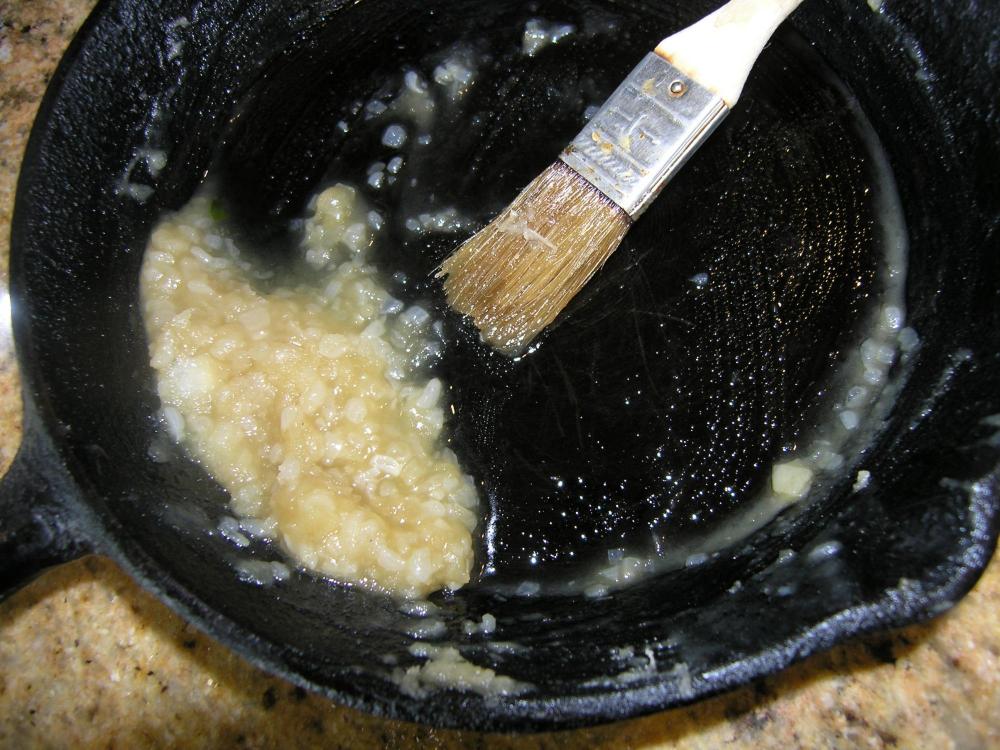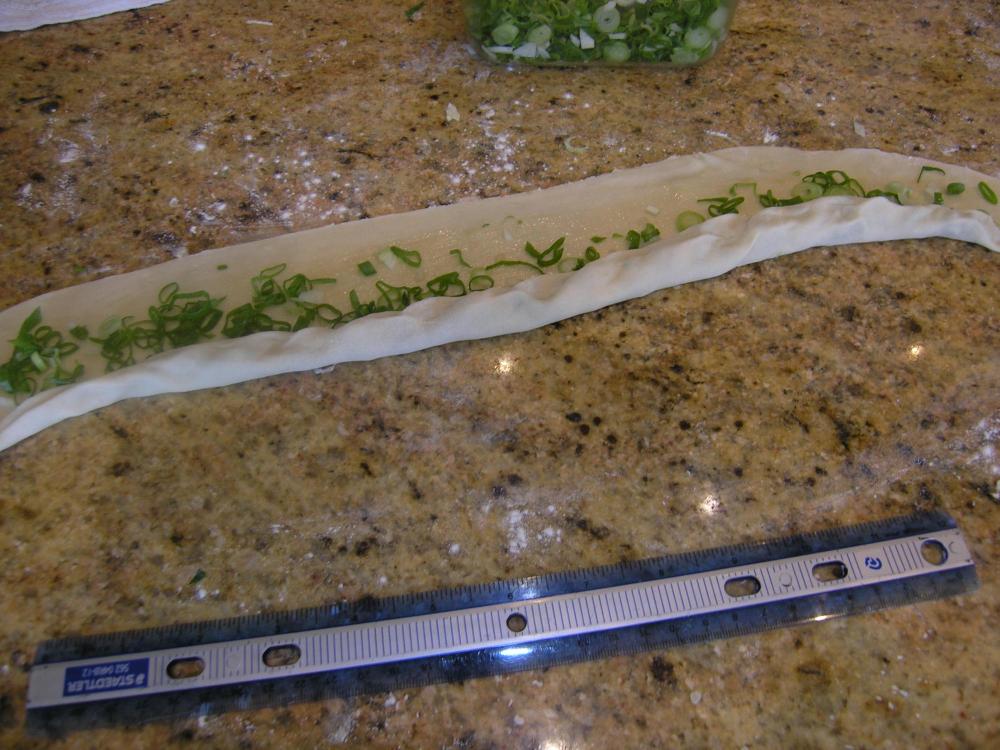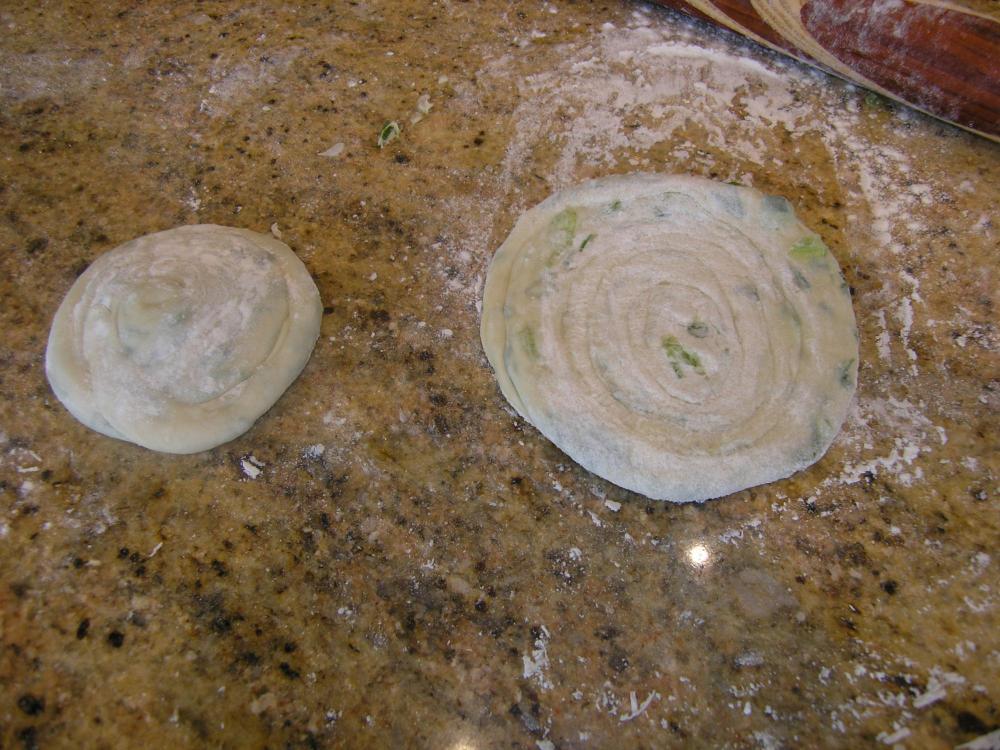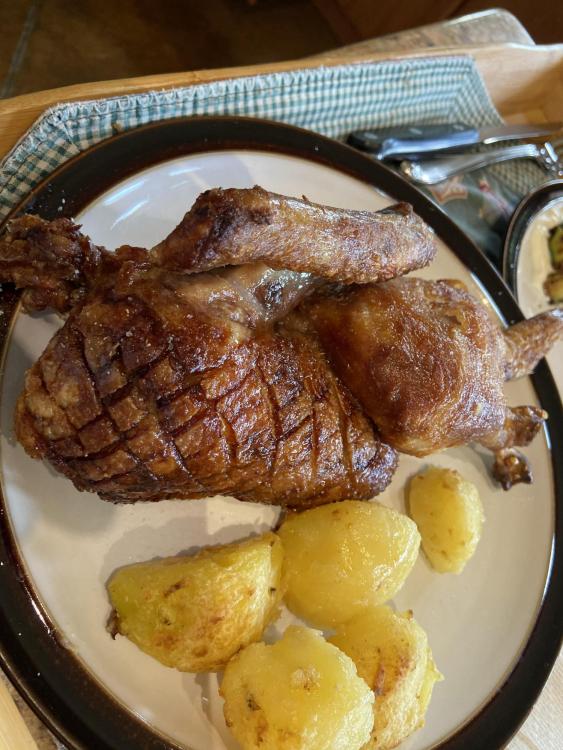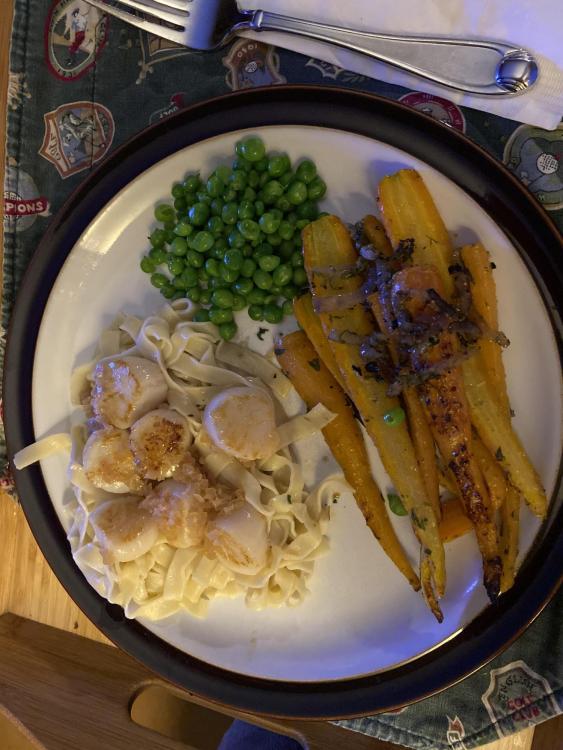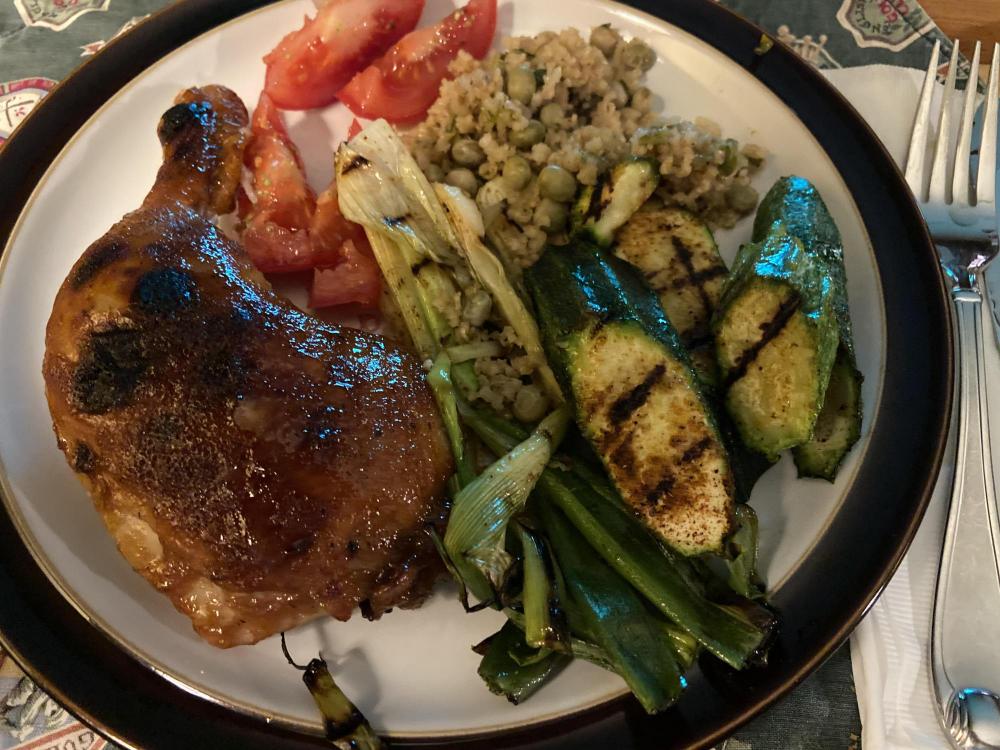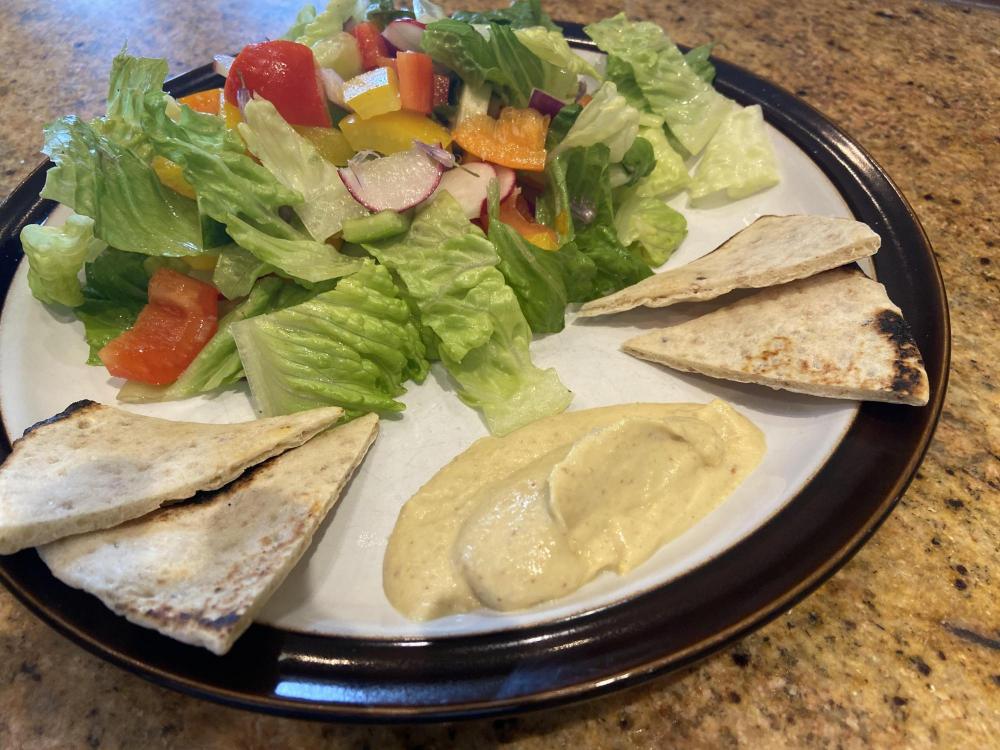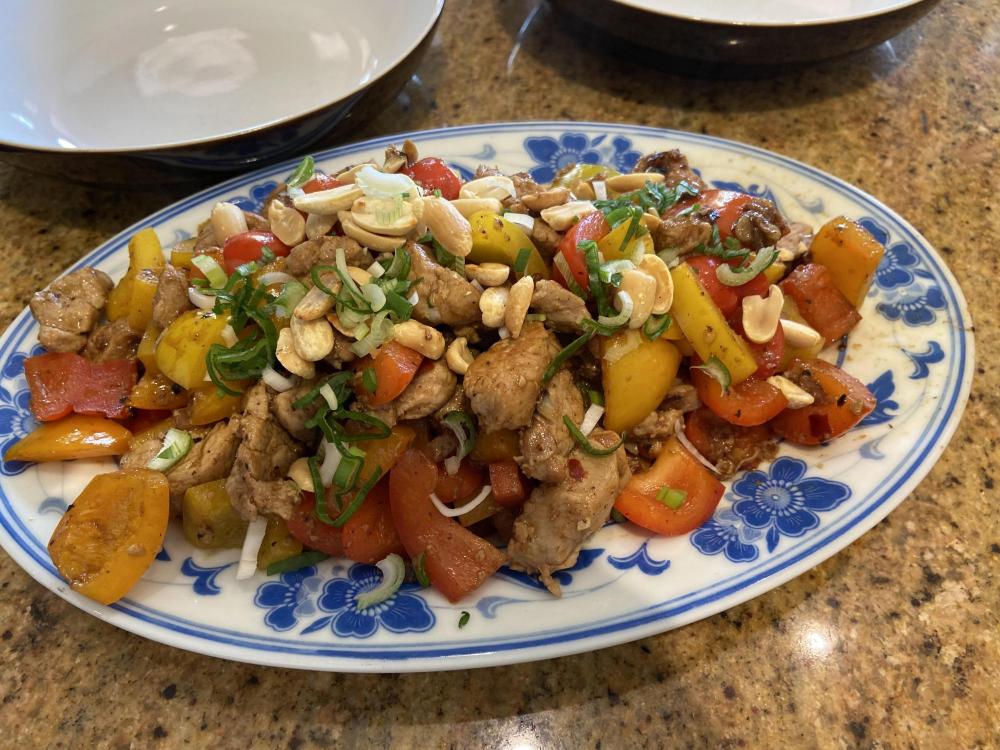-
Posts
4,694 -
Joined
-
Last visited
Content Type
Profiles
Forums
Store
Help Articles
Everything posted by Okanagancook
-
@ElsieDThanks for that link. Their dough looks thick but it would be easy to try the roll without scallion technique. After using the roux I am a fan. It really helps keep the cakes layers together.
-
I have been making green onion cakes for a lot of years. My recipe was based on a newspaper recipe submitted by a restaurant which made 'the best green onion cakes ever'. With the plethora of spring onions in the garden I thought it a good opportunity to explore other recipes and the 'ins and outs' of green onion cakes. I have not been enamoured with my past cakes. I looked at a lot of Utube videos and made notes about the different tips and secrets that each presenter had to offer in the pursuit of the ultimate crispy cake. I have based my cake making on Chef John's recipe and technique, here: https://www.youtube.com/watch?v=uxbS6j1B1Ps&t=427s I also found this video about the different ways of rolling them: Chef John's recipe is: 2 cups APF 1.5 tsp salt 3/4 cup very hot water Mix, knead and rest overnight Make a roux using: 3 Tablespoons vegetable oil 2 tsp sesame oil 2 tablespoons plus 1 tsp APF Bring the ingredients to a boil over medium low heat and simmer for about a minute..cool. From my Search I have found the following methods and variations: The Dough: Mostly the dough is made with APF. Some like to use a mixture of APF with either cornstarch or cake flour because that results in a lower protein content and softer dough. Some add baking soda to make it lighter. The water temperature can be either boiling, very hot or room temperature or a mixture of hot and room temp. The dough is rested anywhere from 30 minutes to overnight. The overnight rest is supposed to add flavour and make the dough easier to roll out. The dough is to rolled very thin so many layers can be created. The Roux: This is the secret to good cakes as per many videos. The basic recipe is above. Some add seasonings such as salt, black pepper, chili flakes, Szechwan pepper or sautéed white part from the spring onion. The Rolling: The video link above shows most of the variations. The point is to create layers so the cake is flaky...much like puff pastry. The Cooking Most show the cakes being cooked covered for about 3 to 4 minutes a side with varying amounts of oil. Covering ensures the centre of the cakes gets cooked before the outside is brown...this is a revelation and really works...mine were very often raw in the centre. If you have any experience with the variations your comments would be welcome. I made Chef John's recipe with very hot water and rested in overnight. I made the roux two ways. First his basic recipe then I added the sautéed white part of the green onion. This resulted in a very pasty mix which was hard to spread. I would just go with his basic recipe next time and I would add some salt. I made each cake from 85 grams of dough so I got 6 cakes from the recipe. At first I was rolling them out by hand then decided to use the Kitchen Aid Pasta Roller as I do when making pot stickers. I rolled the dough out to #4 which resulted in the perfect thickness. I used Chef John's rolling technique. I did try the technique of rolling from each end then stacking the two...I have yet to cook those. It is important to stretch the rolled dough out before rolling into a cake. Seems to make them easier to roll out into the cake. I cooked mine 4 min/side covered over just slightly less than medium heat. I used maybe 2 tsp oil. They were flaky but not as flaky as some of the videos. I maybe should have used more oil in the cooking pan. Or maybe I rolled them out too thin. I basically had two layers. Here are some pictures...that's the roux with onions. .
-
Seems like it would something nice to have with cocktails..no fussing with yeasted dough. Thanks.
-
Hi Kim: as the originator of the spreadsheet, I have tried (with my limited technical skill) to re-organize it so like items are grouped together. It is a little monster that has grown requiring a bit of love and attention. Thanks for bringing this up. I will send a revised Spreadsheet to @Smithy for posting. cheers
-
No smoke although that did cross my mind. DH is not super keen on smoke. The Weber has a smoke box too. I am cooking rotisserie a chicken tonight with a Mexican marinade so some smoke would fit! applewood soaking...
-
I used my Weber..it has an infrared element along the back. I turned the two outside burners to high and the infrared on high which produced an oven temp of 350 to 375. Turned Bird for for 90 minutes. Oh yes, drip pan into which parboiled potatoes were tossed in at 45 minutes of the cook. Towards the end I had the temp at 400 for 15 min to help get the skin crisp. Leftover meat turned into spring rolls 😘
-
Rotisserie Duck and, of course, duck fat roasted potatoes..other vegetables not pictured because the duck is the star.
-
Last night was: fresh peas from the garden; roasted red onion & carrots from the garden and scallops in a wine/butter sauce over homemade pasta.
-
I freeze our bread...usually sliced and take out what I am going to eat the same day. I used to keep it in the fridge in a plastic bag but I read the colder temp changes the starch structure and make it go stale faster...not sure where I read that but the frozen slices taste great even if they are thawed a bit in the microwave.
-
One can buy seed Warbas at the local garden shop. We usually get Yukon golds...will have to try the Warbas next year.
-
For those interested in the topic of growing garlic, this website has a lot of info https://www.garlicfarm.ca
-
Paul, I have never used the seed pods for next year...I use the bulbs. Interesting. Too late for this year but next year I might try a few scapes for seeding. And I wonder how much smaller the bulbs with grown scapes really are. Thanks.
-
Paul, wonderful gardens. Lots of good eating there. I am curious as to why you let your garlic scapes bloom. I always understood that unless you want to propagate them that way, one should cut the scapes off so the garlic bulb gets to it's potential..not wasting energy on the bloom.
-
Really? Dry and tough. Hummmm. That’s disappointing. i put a smoked hock in my baked beans which gets cooked in a 220 f oven for six or so hours. Then I take it out and take all the meat off...Meat is juicy and goes back in the bean pot.
-
I read somewhere to use a cheese cutting wire. Not sure how that would work...I generally don’t bake.
-
They were in on bake steam at 425 for 15 min no sauce. Then I sauced them with a bbq sauce very liberally and put them back in for 5 min. I then sauced them again and put it on steam broil at 475 for 5 min. The skin was not crisp but the meat was perfect. These legs were not huge...from a 3 1/2 lb bird.
-
FWIW, from "hip PRESSURE COOKING" by Laura Pazzaglia, page 277 cooking chart for Pork Shank....35 - 40 min on high pressure NPR (I always us NPR for meat and the book says "Normal, Natural)
-
CSO chicken leg, West Indian peas & rice, grilled zucchini & spring onion and fresh tomatoes. The chicken was so moist and the onions a bit 'stringy'...should have chopped them up before putting them on the plate.
-
-
Stir fried pork with peppers and rice with some spring onions (not shown). The peanuts were past their prime so we picked them off 🙃
-
Air fryer chicken thighs, baked potato, grilled spring onions from the garden and the last of this year's asparagus steam baked in the CSO with Aleppo pepper and a pureed asparagus sauce from Happy In The Kitchen.
-
I made mushrooms on toast for the first time. I used homemade bread that was spread with some aioli then topped with well cooked brown mushrooms with a good crack of black pepper. It was delicious and worthy of repeating.
-
I made the pan-roasted pork chop with olives and Sambuca- braised fennel. Wow. The fennel is phenomenal. It gets very caramelized. The rub for the pork is excellent. I just cooked my chop on the stove top.
-
It is worth a purchase. It has amazing range for making things...America test kitchen has a book out if you want To enhance her experience. I cook chicken thighs in there all the time. Also is so easy on the clean up...Chuck it in the DW.



